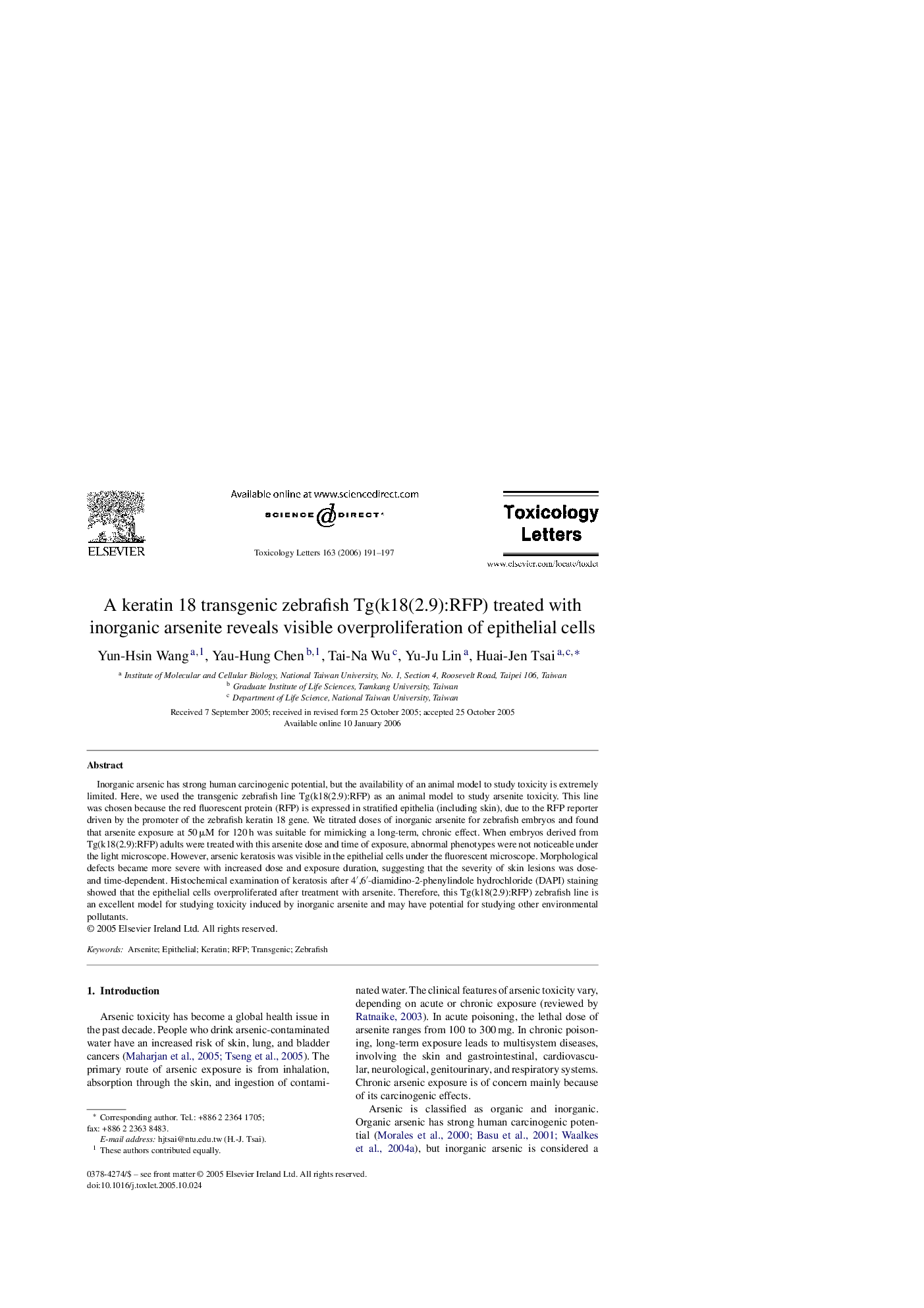| کد مقاله | کد نشریه | سال انتشار | مقاله انگلیسی | نسخه تمام متن |
|---|---|---|---|---|
| 2601202 | 1133306 | 2006 | 7 صفحه PDF | دانلود رایگان |

Inorganic arsenic has strong human carcinogenic potential, but the availability of an animal model to study toxicity is extremely limited. Here, we used the transgenic zebrafish line Tg(k18(2.9):RFP) as an animal model to study arsenite toxicity. This line was chosen because the red fluorescent protein (RFP) is expressed in stratified epithelia (including skin), due to the RFP reporter driven by the promoter of the zebrafish keratin 18 gene. We titrated doses of inorganic arsenite for zebrafish embryos and found that arsenite exposure at 50 μM for 120 h was suitable for mimicking a long-term, chronic effect. When embryos derived from Tg(k18(2.9):RFP) adults were treated with this arsenite dose and time of exposure, abnormal phenotypes were not noticeable under the light microscope. However, arsenic keratosis was visible in the epithelial cells under the fluorescent microscope. Morphological defects became more severe with increased dose and exposure duration, suggesting that the severity of skin lesions was dose- and time-dependent. Histochemical examination of keratosis after 4′,6′-diamidino-2-phenylindole hydrochloride (DAPI) staining showed that the epithelial cells overproliferated after treatment with arsenite. Therefore, this Tg(k18(2.9):RFP) zebrafish line is an excellent model for studying toxicity induced by inorganic arsenite and may have potential for studying other environmental pollutants.
Journal: Toxicology Letters - Volume 163, Issue 3, 1 June 2006, Pages 191–197